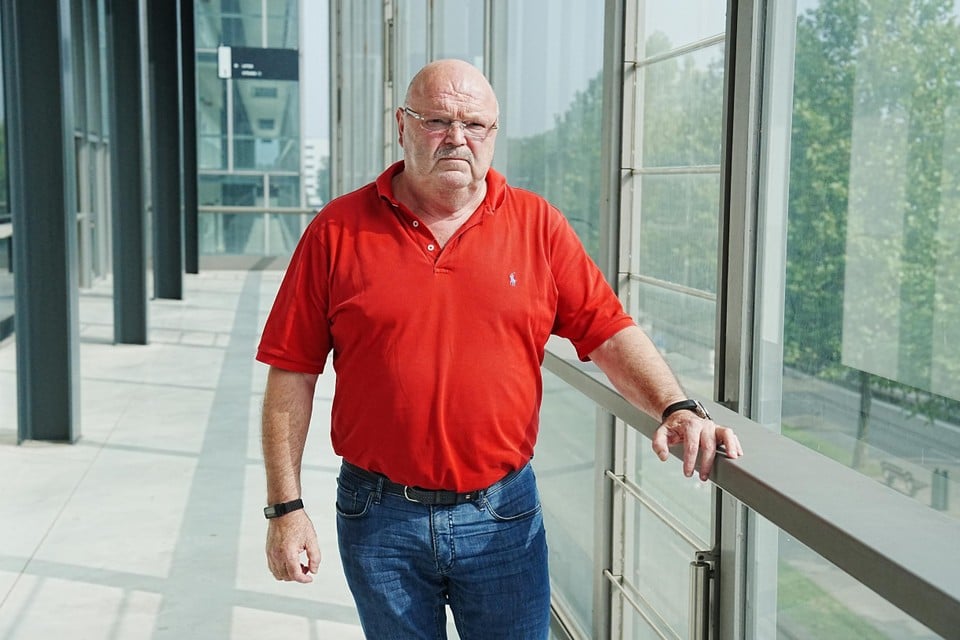‘The most influential scientist you have never heard of’
/s3/static.nrc.nl/images/gn4/stripped/data132271249-d06a00.jpg|https://images.nrc.nl/lOFWYQBNRbsXA8TB0uDUJN7aO0w=/1920x/filters:no_upscale()/s3/static.nrc.nl/images/gn4/stripped/data132271249-d06a00.jpg|https://images.nrc.nl/h11dR7h4ecc5BReeWFJs4CuoeTg=/5760x/filters:no_upscale()/s3/static.nrc.nl/images/gn4/stripped/data132271249-d06a00.jpg)
The designer of the very first hydrogen bomb, Richard Garwin, died on 13 May at the age of 97. The American scientist was the last representative of the era, from 1939 to 1952, in which physicists suddenly changed academic researchers of the rather esoteric quantum mechanics and nuclear physics, in atomic scholars who had the keys in their hands as the most powerful weapons of the earth: the atomic bom and the vyurbom and the vyurbom and the vyurbom and the vyurbom.
In 1952 the brilliant 23-year-old physicist worked out the design for Ivy Mike, the nuclear weapon based on nuclear fusion between hydrogen atoms, more powerful than the already destructive atomic bomb. The ideas for the hydrogen bomb had been developed by the Hungarian physicist Edward Teller and his colleague Stanislaw Ulam, but the design was in the hands of the just promoted Garwin, who was called « the only real genius I have ever met » by his supervisor Enrici.
Photo Reuters
On November 1 of that year, the atomic test blew up the island of Eenwaak in the Pacific with the power of 700 times the atomic bomb that the Americans had dropped on Hiroshima seven years earlier. The development of nuclear weapons led to a weapon race that regretted Garwin. « I think it would be a better world if the hydrogen bomb never existed. But I knew the bombs would be used as a deterioration, » he said in 1984 in an interview With the magazine Esquire.
« Garwin was a greatness and a living legend, » says Machiel Kleemans from the University of Amsterdam, physicist and science historian who obtained his PhD in the development of nuclear weapons and energy in the US and Europe. But unlike physicists such as Robert Oppenheimer and Fermi, few non-dedicated people were named Garwin. The subtitle of his 2017 biography was « the most influential scientist you have never heard of ».
That relative unfamiliarity had to do with his frequent advisory for companies and government institutions in the field of defense and intelligence, not bodies that like to open up things.
After his success as a nuclear weapon developer, Garwin Koos a job at IBM, with a lot of room for these advisorships. Garwin thought, calculated, advised and published on matters ranging from spy satellites, touchscreens, anti-rocket systems, MRI imaging, communication systems, and methods to detect gravity waves (something that physicists also succeeded in 2015, thanks to his support).
/s3/static.nrc.nl/images/gn4/stripped/data132271255-2d842f.jpg|https://images.nrc.nl/C709-GYDqBwHR4cnCKauFCpFl7Y=/1920x/filters:no_upscale()/s3/static.nrc.nl/images/gn4/stripped/data132271255-2d842f.jpg|https://images.nrc.nl/zCddpUMGNs2gqEdtDRVfEX5oySw=/5760x/filters:no_upscale()/s3/static.nrc.nl/images/gn4/stripped/data132271255-2d842f.jpg)
Photo Getty Images
He was a co-inventor on 47 patents, and was one of the few scientists who were members of the three national academies of engineers, scientists and doctors. Garwin was a scientific adviser for presidents from Dwight Eisenhower to Bill Clinton.
But in particular, he was committed to keeping the nuclear weapon race that he had helped to unleash himself, by pleading for treaties for limiting nuclear weapons and forbidden on nuclear weapon tests. He also helped in the development of detection systems to be able to detect illegal nuclear weapon tests.
Garwin was known as a scientist who did not hide his opinion. For antiballistic racet systems that had to intercept up -and -coming nuclear missiles, such as President Ronald Reagans SDI or « Star Wars, » he didn’t have a good word about it. The plans were never implemented.

:format(webp)/s3/static.nrc.nl/wp-content/uploads/2025/04/17155923/data130727470-da9439.jpg)
:format(webp)/s3/static.nrc.nl/images/gn4/stripped/data132290841-6bbea8.jpg)
:format(webp)/s3/static.nrc.nl/bvhw/files/2023/11/data107446299-1b8805.jpg)




